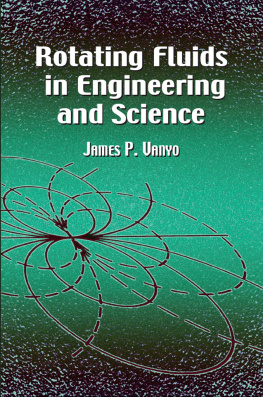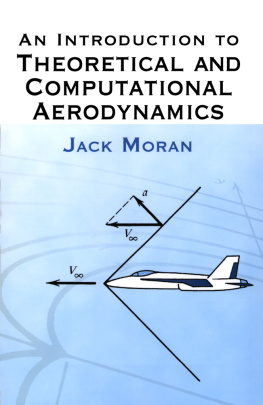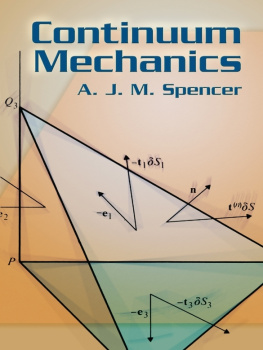
Aerospace Series List
| Introduction to UAV Systems, 4th Edition | Fahlstrom and Gleason | August 2012 |
| Theory of Lift: Introductory Computational Aerodynamics with MATLAB and Octave | McBain | August 2012 |
| Sense and Avoid in UAS: Research and Applications | Angelov | April 2012 |
| Morphing Aerospace Vehicles and Structures | Valasek | April 2012 |
| Gas Turbine Propulsion Systems | MacIsaac and Langton | July 2011 |
| Basic Helicopter Aerodynamics, 3rd Edition | Seddon and Newman | July 2011 |
| Advanced Control of Aircraft, Spacecraft and Rockets | Tewari | July 2011 |
| Cooperative Path Planning of Unmanned Aerial Vehicles | Tsourdos et al | November 2010 |
| Principles of Flight for Pilots | Swatton | October 2010 |
| Air Travel and Health: A Systems Perspective | Seabridge et al | September 2010 |
| Design and Analysis of Composite | Kassapoglou | September 2010 |
| Structures: With applications to aerospace Structures |
| Unmanned Aircraft Systems: UAVS Design, Development and Deployment | Austin | April 2010 |
| Introduction to Antenna Placement & Installations | Macnamara | April 2010 |
| Principles of Flight Simulation | Allerton | October 2009 |
| Aircraft Fuel Systems | Langton et al | May 2009 |
| The Global Airline Industry | Belobaba | April 2009 |
| Computational Modelling and Simulation of Aircraft and the Environment: Volume 1 - Platform Kinematics and Synthetic Environment | Diston | April 2009 |
| Handbook of Space Technology | Ley, Wittmann Hallmann | April 2009 |
| Aircraft Performance Theory and Practice for Pilots | Swatton | August 2008 |
| Surrogate Modelling in Engineering Design: A Practical Guide | Forrester, Sobester, Keane | August 2008 |
| Aircraft Systems, 3rd Edition | Moir & Seabridge | March 2008 |
| Introduction to Aircraft Aeroelasticity And Loads | Wright & Cooper | December 2007 |
| Stability and Control of Aircraft Systems | Langton | September 2006 |
| Military Avionics Systems | Moir & Seabridge | February 2006 |
| Design and Development of Aircraft Systems | Moir & Seabridge | June 2004 |
| Aircraft Loading and Structural Layout | Howe | May 2004 |
| Aircraft Display Systems | Jukes | December 2003 |
| Civil Avionics Systems | Moir & Seabridge | December 2002 |
This edition first published 2013
2013 Boeing. All rights reserved.
Registered office
John Wiley & Sons Ltd, The Atrium, Southern Gate, Chichester, West Sussex, PO19 8SQ, United Kingdom
For details of our global editorial offices, for customer services and for information about how to apply for permission to reuse the copyright material in this book please see our website at www.wiley.com.
The right of the author to be identified as the author of this work has been asserted in accordance with the Copyright, Designs and Patents Act 1988.
All rights reserved. No part of this publication may be reproduced, stored in a retrieval system, or transmitted, in any form or by any means, electronic, mechanical, photocopying, recording or otherwise, except as permitted by the UK Copyright, Designs and Patents Act 1988, without the prior permission of the publisher.
Wiley also publishes its books in a variety of electronic formats. Some content that appears in print may not be available in electronic books.
Designations used by companies to distinguish their products are often claimed as trademarks. All brand names and product names used in this book are trade names, service marks, trademarks or registered trademarks of their respective owners. The publisher is not associated with any product or vendor mentioned in this book. This publication is designed to provide accurate and authoritative information in regard to the subject matter covered. It is sold on the understanding that the publisher is not engaged in rendering professional services. If professional advice or other expert assistance is required, the services of a competent professional should be sought.
Library of Congress Cataloging-in-Publication Data
McLean, Doug (Doug J.)
Understanding aerodynamics : arguing from the real physics / Doug McLean.
pages cm
Includes bibliographical references and index.
ISBN 978-1-119-96751-4 (hardback)
1. Aerodynamics. I. Title.
TL570.M3823 2013
629.132dc23
2012032706
A catalogue record for this book is available from the British Library
Print ISBN: 978-1-119-96751-4
Foreword
The job of the aeronautical engineer has changed dramatically in recent years and will continue to change. Advanced computational tools have revolutionized design processes for all types of flight vehicles and have made it possible to achieve levels of design technology previously unheard of. And as performance targets have become more demanding, the individual engineer's role in the design process has become increasingly specialized.
In this new environment, design work depends heavily on voluminous numerical computations. The computer handles much of the drudgery, but it can't do the thinking. It is now more important than ever for a practicing engineer to bring to the task a strong physical intuition, solidly based in the physics. In this book, Doug McLean provides a valuable supplement to the many existing books on aerodynamic theory, patiently exploring what it all means from a physical point of view. Students and experienced engineers alike will surely profit from following the thought-provoking arguments and discussions presented here.
John J. Tracy
Chief Technology Officer
The Boeing Company
September 2012
Series Preface
The field of aerospace is wide ranging and multi-disciplinary, covering a large variety of products, disciplines and domains, not merely in engineering but in many related supporting activities. These combine to enable the aerospace industry to produce exciting and technologically advanced vehicles. The wealth of knowledge and experience that has been gained by expert practitioners in the various aerospace fields needs to be passed onto others working in the industry, including those just entering from University.
The Aerospace Series aims to be a practical and topical series of books aimed at engineering professionals, operators, users and allied professions such as commercial and legal executives in the aerospace industry, and also engineers in academia. The range of topics is intended to be wide ranging, covering design and development, manufacture, operation and support of aircraft as well as topics such as infrastructure operations and developments in research and technology. The intention is to provide a source of relevant information that will be of interest and benefit to all those people working in aerospace.
Aerodynamics is the fundamental enabling science that underpins the world-wide aerospace industrywithout the ability to generate lift from airflow passing over wings, helicopter rotors and other lifting surfaces, it would not be possible to fly heavier-than-air vehicles as efficiently as is taken for granted nowadays. Much of the development of today's highly efficient aircraft is due to the ability to accurately model aerodynamic flows using sophisticated computational codes and thus design high-performance wings; however, a thorough understanding and insight of the aerodynamic flows is vital for engineers to comprehend these designs.
Next page














